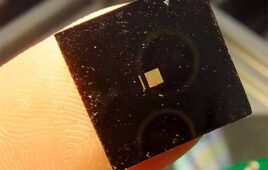
The vagus nerve originates in the brainstem. A Feinstein Institute researcher is studying its role in sepsis.
The National Institutes of Health has awarded a New York researcher $1.65 million to study the vagus nerve’s role in sepsis, the body’s overwhelming and life-threatening response to infection.
Valentin Pavlov of The Feinstein Institute for Medical Research (Manhasset, N.Y.) received the five-year grant to examine how the vagus nerve affects the inflammation and metabolism associated with sepsis. Having a better understanding of the nervous system’s signaling during sepsis could lead to the identification of new therapeutic targets within the scope of bioelectronic medicine, according to the institute.
Sepsis is a lethal disease defined as a life-threatening organ dysfunction caused by a dysregulated host response to infection. The chemicals released into the bloodstream to combat the infection cause widespread inflammation, which leads to blood clots and leaky blood vessels. As a result, blood flow is impaired, and that deprives organs of nutrients and oxygen and leads to organ damage.
In severe cases, one or more organs fail. In the worst cases, blood pressure drops, the heart weakens, and the patient spirals toward septic shock. Once this happens, multiple organs — lungs, kidneys, liver — may quickly fail, and the patient may die.
Sepsis is not only potentially deadly, but very costly. The average hospital stay for sepsis costs $18,000 per patient, according to the nonprofit Sepsis Alliance. Sepsis was listed as the number one reason for hospital stays in the United States, with a cost totaling nearly $24 million per year, according to a study published in 2016 by the Healthcare Cost and Utilization Project.
The new study will build on previous research conducted by Feinstein Institute president & CEO Dr. Kevin Tracey, who discovered that the brain and the vagus nerve are involved in controlling immune responses and inflammation. Tracey and his team used state-of-the-art technology of the late 1990s and early 2000s to trace the signals that travel to and from the brain along the periphery of the body. Their discovery is known as the inflammatory reflex.
Now Pavlov is studying how electronically stimulating the vagus nerve’s two sources within the brainstem, the dorsal motor nucleus and the nucleus ambiguus, alters markers of tissue injury and cytokines during sepsis.
“There is no specific and efficient treatment for sepsis,” Pavlov said in an interview with Medical Design & Outsourcing. “Even surviving sepsis doesn’t solve the problem.”
Many people who survive sepsis and are discharged from the hospital have what he described as “a severely worsened quality of life,” including severe cognitive problems similar to mild Alzheimer’s disease, neuropathies, myopathies, and higher mortality. Pavlov hopes that his research will point to ways that bioelectronic medicine can treat sepsis and also help sepsis survivors. One day, it might even benefit people who have Alzheimer’s disease and other cognitive problems.
So far, the research has shown “promising results,” Pavlov said. “That’s all I can say at this point.”




